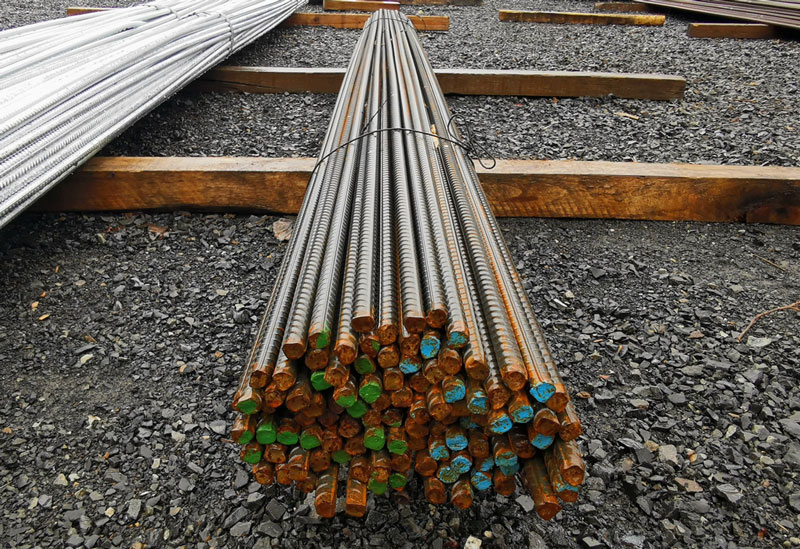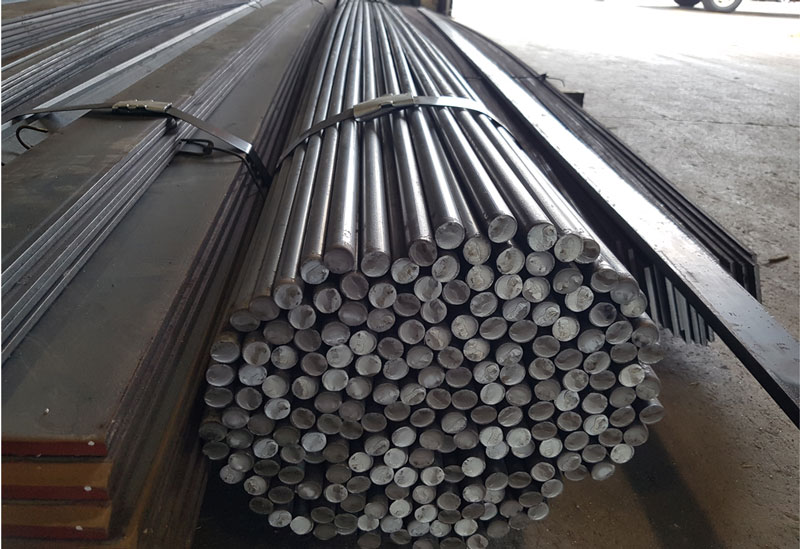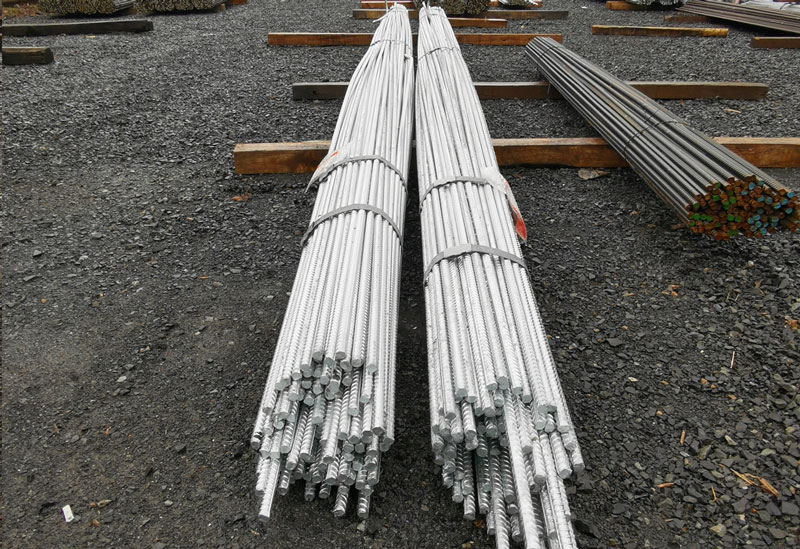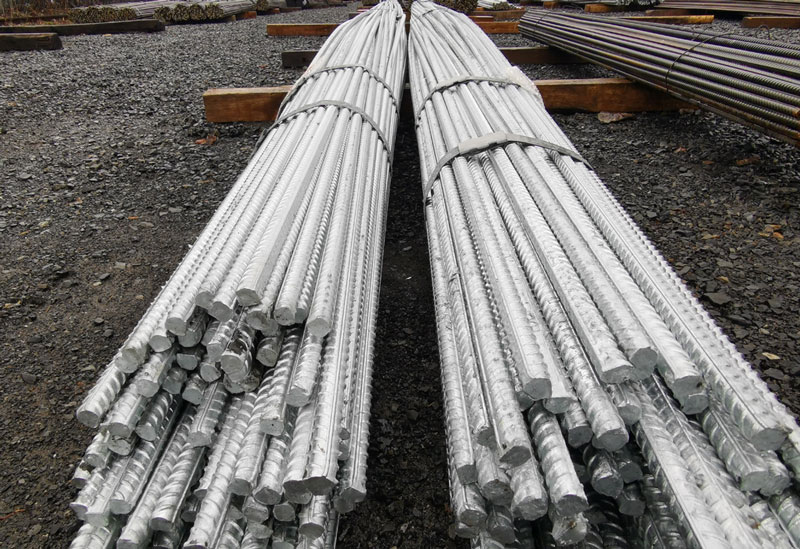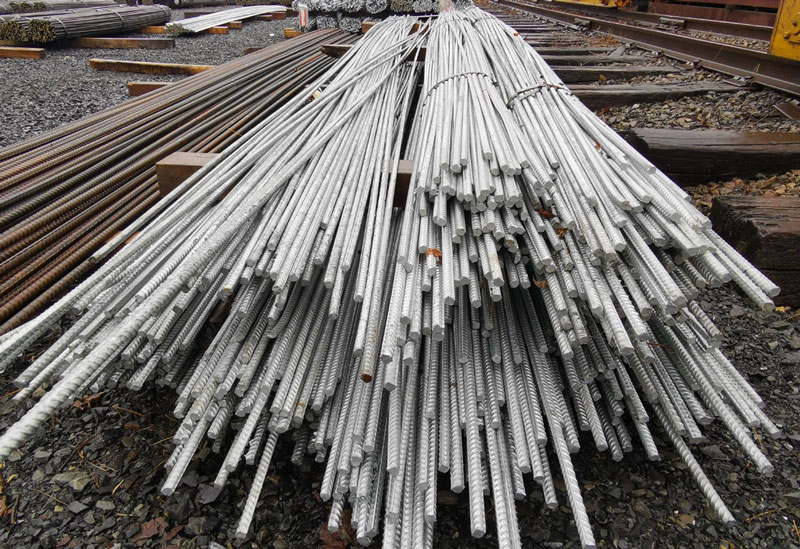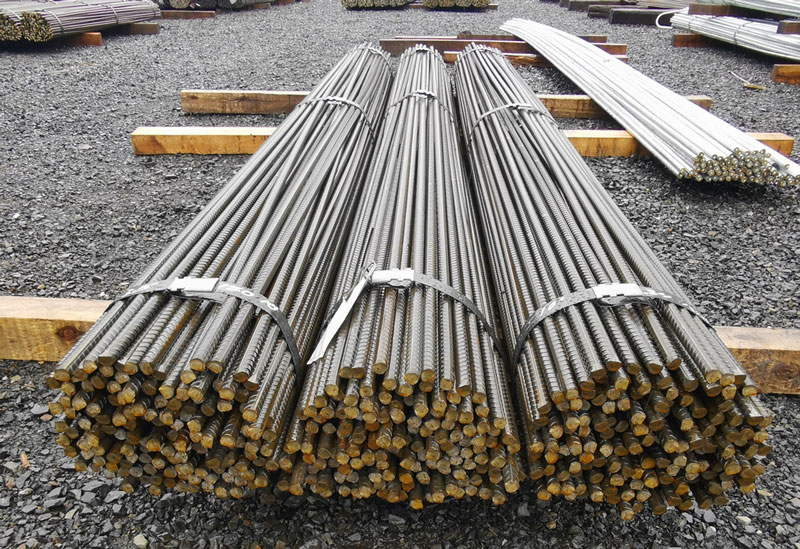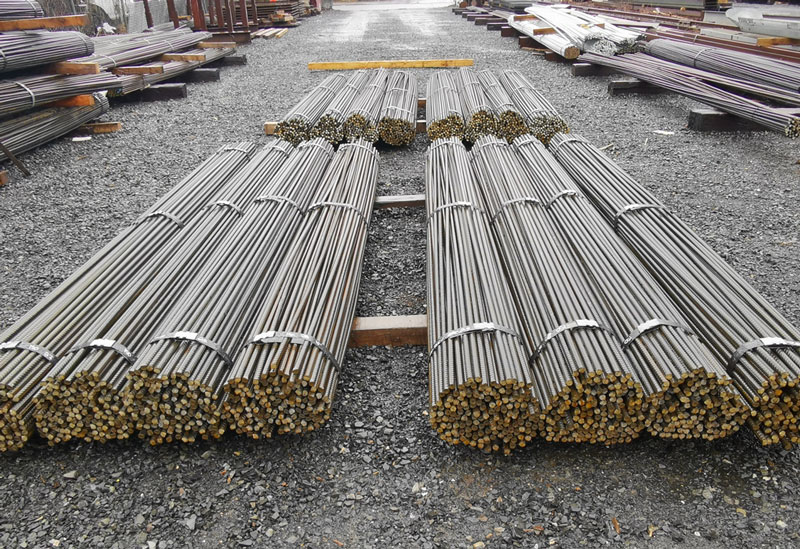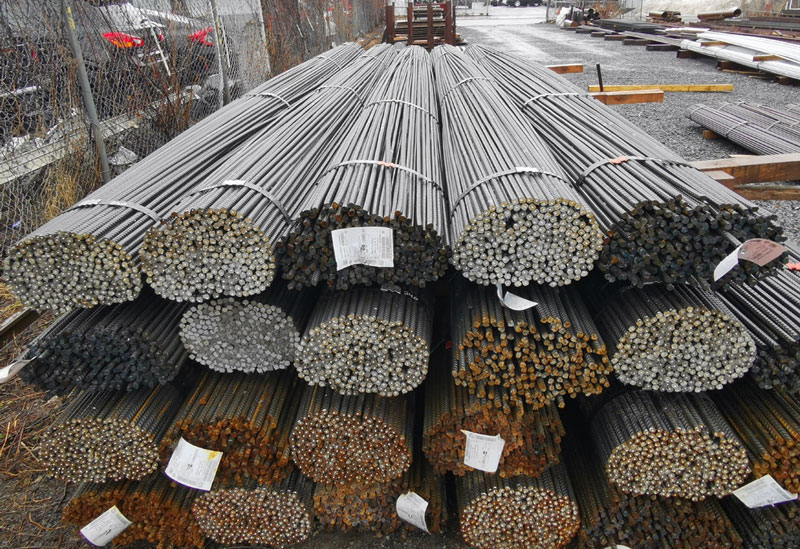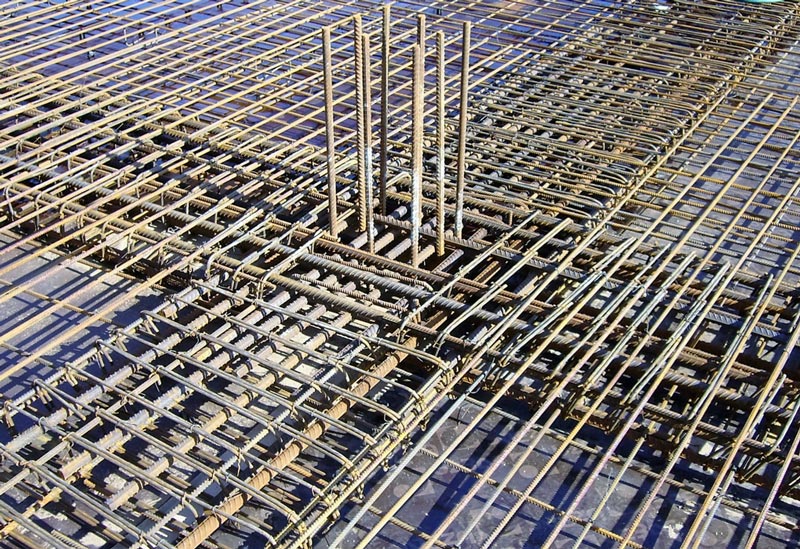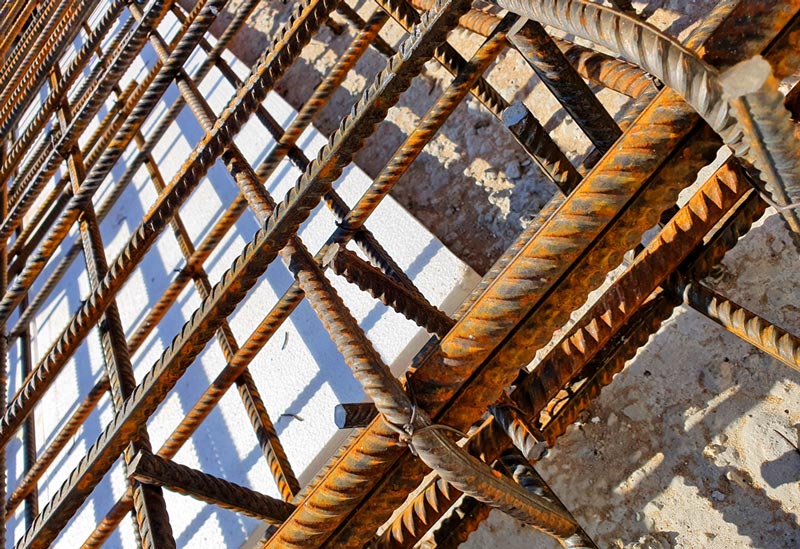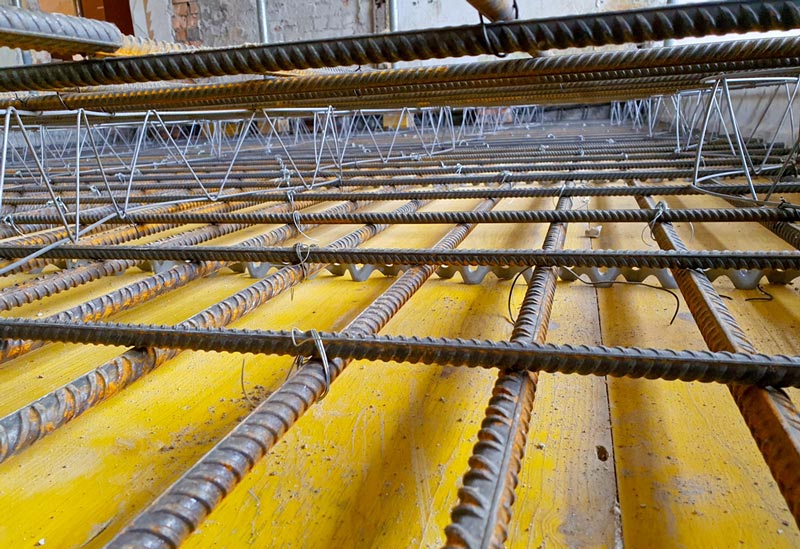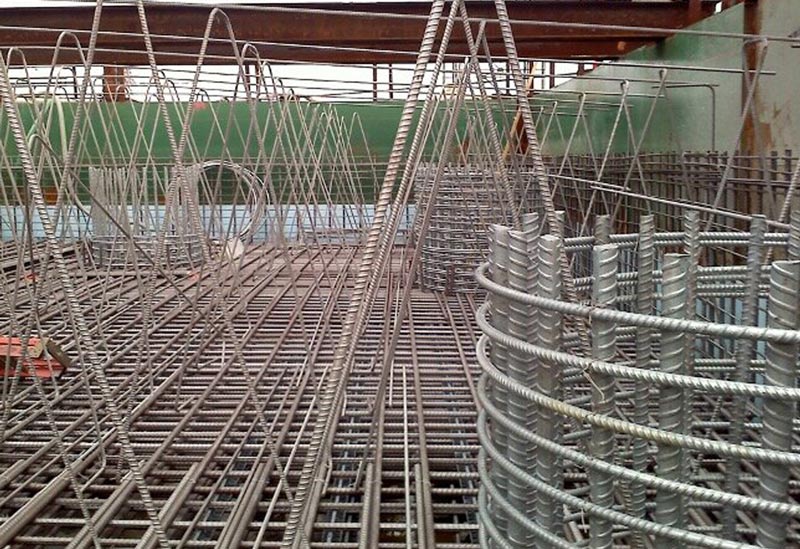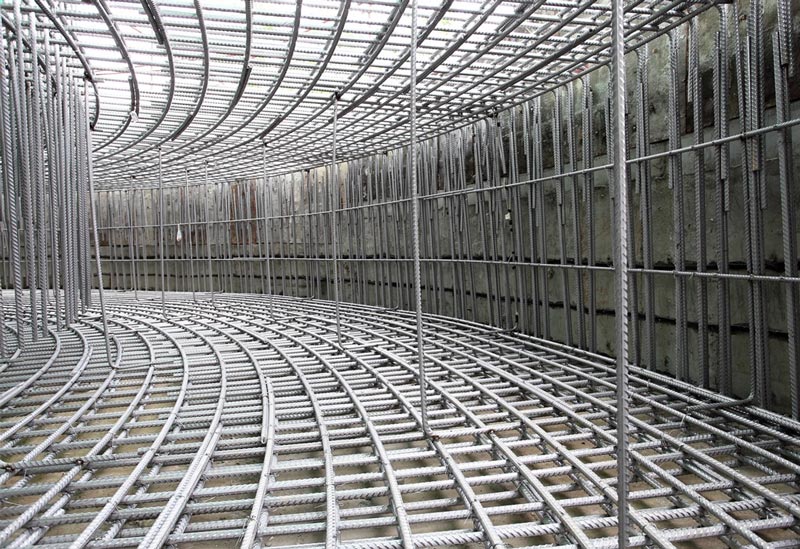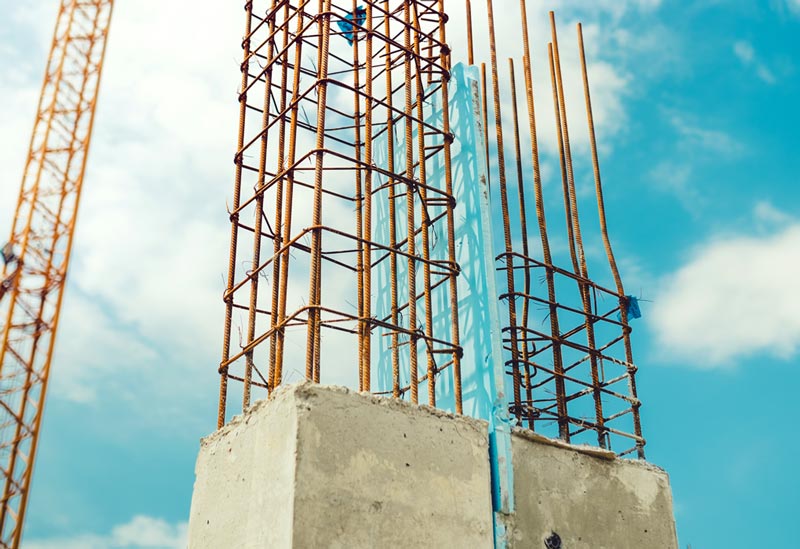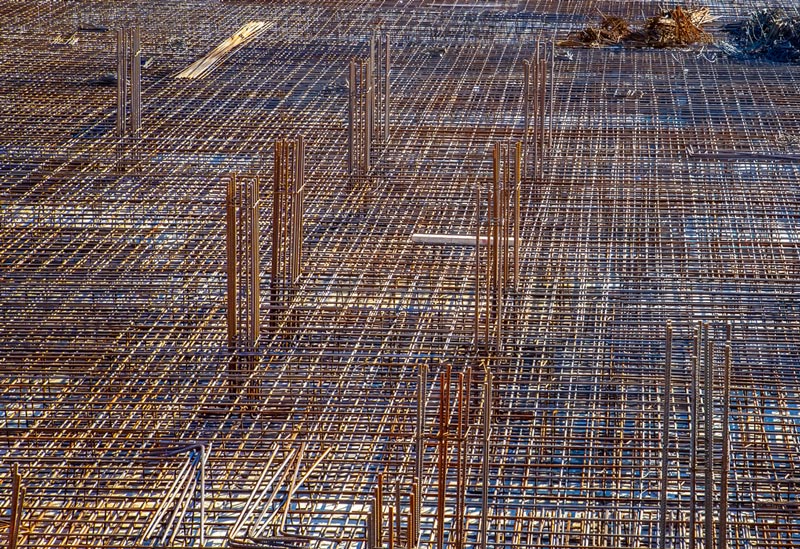
Acier Lachine offers a wide range of standard and special reinforcing bars for construction projects of any scale. Couple that with Acier Lachine’s competitive cut-to-measure service – and you can be sure you are in the right place to cover all your reinforcement construction needs. The rebars are cut, bent, and pre-fixed(optional) for various concrete structures and are delivered to construction sites.
Rebar (short for Reinforcing Bar), also known as reinforcement steel, is used in reinforced concrete and reinforced masonry structures. Concrete is strong under compression, but tension forces can crack it. Therefore, rebar is used as a tension device to significantly increase the tensile strength of the structure. Rebar is made from steel because steel is very strong, and because steel expands and shrinks at nearly the same rate as concrete in hot and cold weather.
For a better bond with the concrete and to reduce the risk of slippage, the rebar’s surface is covered in ribs, lugs, or indentations. See below the various patterns of the rebars’ surface.

In addition to the rebar patterns, the reinforcing bars are manufactured in different forms such as:
CHOOSING THE RIGHT SIZE OF REBAR
The size of the rebar used in a particular job is dependent on the amount of strength that is needed, consequently, when more strength is needed, bigger rebar is used. The Imperial Measurement categorizes the rebars by a number reflecting the solid diameter of the rebar. The numbers range from #3 (smallest) to #18 (largest). For example, The #3 bar size is 3/8″ diameter of the solid section, the #4 bar size is 4/8″ diameter of the solid section, and the #5 bar size is 5/8″ diameter of the solid section, and so on.
The house project contractors will mostly use #3, #4, and #5 rebars. The rebar size #3 is used for driveways and patios. For walls and columns, #4 rebar size should be used as they require more strength. It is better to use the #5 rebar size for footers and foundations. On the other hand, the civil engineering and industrial constructions will utilize the entire range of sizes, from the smallest #3 to the largest #18.
Please note, that the raised portion of the deformation of the rebar is not considered in measuring the rebar diameter. We need to measure across the roundsquare portion where there is no deformation
Browse All the Technical Specifications & Available Dimensions
REINFORCING BARS
IMPERIAL MEASUREMENT
Reinforcing Bars - Imperial Measurement
| wdt_ID | No. | Diameter in Inches | Diameter in MM | Weight – Lbs./Lin. Ft. | Weight – Bar of 20′ in Lbs. |
|---|---|---|---|---|---|
| 1 | #3 | 3/8″ | 9.5 mm | 0.376 lbs. | 7.520 lbs. |
| 2 | 4# | 1/2″ | 12.7 mm | 0.668 lbs. | 13.360 lbs. |
| 3 | #5 | 5/8″ | 15.9 mm | 1.043 lbs. | 20.860 lbs. |
| 4 | #6 | 3/4″ | 19.0 mm | 1.502 lbs. | 30.040 lbs. |
| 5 | #7 | 7/8″ | 22.2 mm | 2.045 lbs. | 40.900 lbs. |
| 6 | #8 | 1″ | 25.4 mm | 2.670 lbs. | 53.400 lbs. |
| 7 | #10 | 1 1/4″ | 31.8 mm | 4.303 lbs. | 86.060 lbs. |
| No. | Diameter in Inches | Diameter in MM | Weight – Lbs./Lin. Ft. | Weight – Bar of 20′ in Lbs. |
Reinforcing Bars - Metric Measurement
| wdt_ID | No. | Diameter in Inches | Diameter in MM | Weight – Lbs./Lin. Ft. | Weight – Bar of 20′ in Lbs. |
|---|---|---|---|---|---|
| 1 | 10 mm | 0.390″ | 11.2 mm | 0.407 lbs. | 8.14 lbs. |
| 2 | 10 m | 0.455″ | 11.3 mm | 0.527 lbs. | 10.54 lbs. |
| 3 | 12 m | 0.475″ | 12.06 mm | 0.596 lbs. | 11.92 lbs. |
| 4 | 15 m | 0.630″ | 16.0 mm | 1.056 lbs. | 21.10 lbs. |
| 5 | 20 m | 0.768″ | 19.5 mm | 1.582 lbs. | 31.64 lbs. |
| 6 | 25 m | 0.992″ | 25.2 mm | 2.637 lbs. | 52.74 lbs. |
| 7 | 30 m | 1.177″ | 29.9 mm | 3.693 lbs. | 73.84 lbs. |
| 8 | 35 m | 1.405″ | 35.7 mm | 5.276 lbs. | 105.50 lbs. |
| 9 | 45 m | 1.720″ | 43.7 mm | 7.912 lbs. | 158.24 lbs. |
| 10 | 55 m | 2.220″ | 56.4 mm | 13.188 lbs. | 263.74 lbs. |
| No. | Diameter in Inches | Diameter in MM | Weight – Lbs./Lin. Ft. | Weight – Bar of 20′ in Lbs. |



